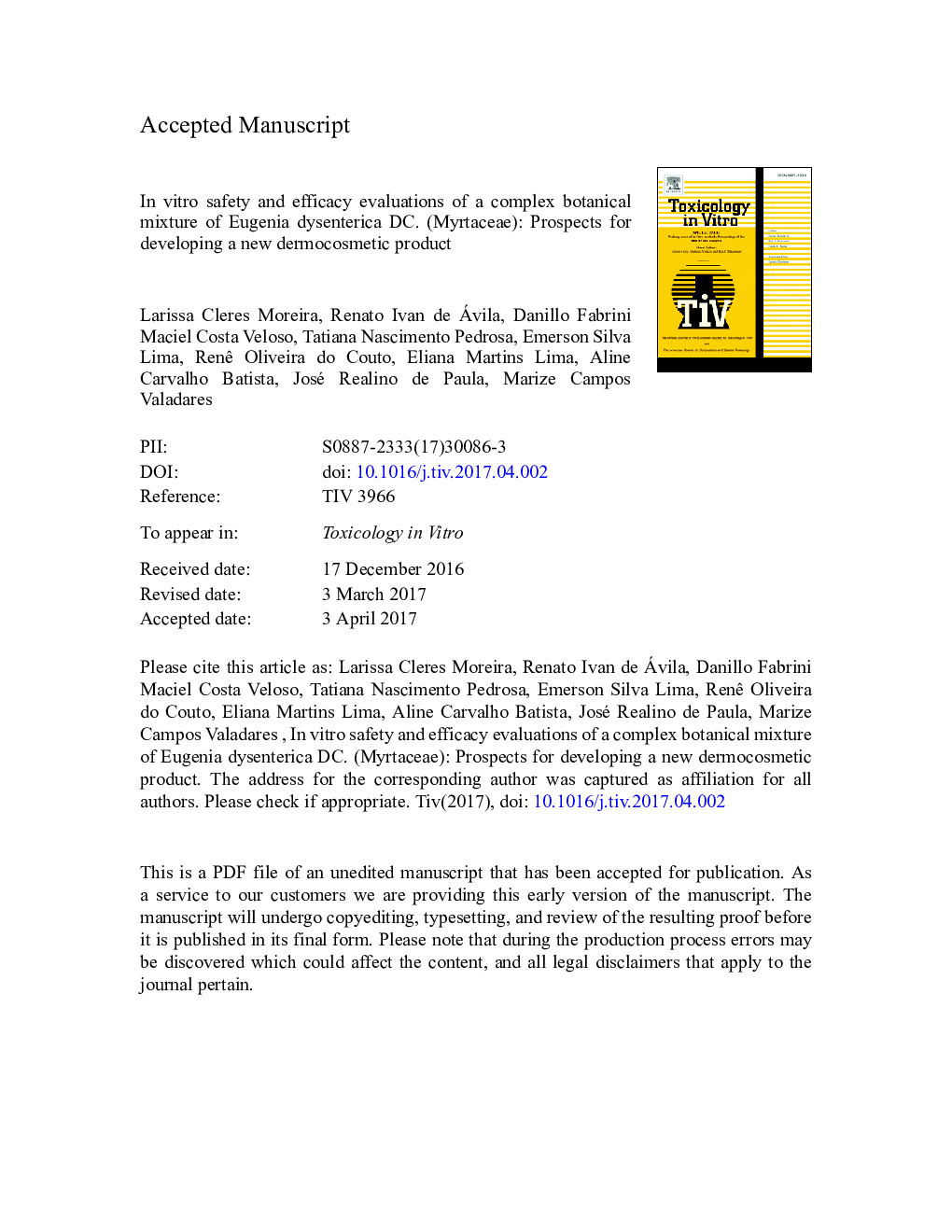| Article ID | Journal | Published Year | Pages | File Type |
|---|---|---|---|---|
| 8554174 | Toxicology in Vitro | 2017 | 40 Pages |
Abstract
In the context of developing a new natural product-based cosmetic, the in vitro efficacy and safety evaluations of a complex botanical mixture based on Eugenia dysenterica leaf hydroalcoholic extract (EDE) (2.5-1000 μg/mL) were carried out. Chromatographic analysis demonstrated the presence of the tannin (ellagic acid) and flavonoids (quercetin and gallic acid) which characterize the EDE as a polyphenol-rich mixture. Using HFF-1 fibroblasts, it was shown that EDE promoted cell regeneration after UVA exposure. It also led to the inhibition of the collagenase, elastase and tyrosinase enzymes, which are involved in skin-related disorders. In terms of toxicological evaluation, the EDE was classified as non-phototoxic through the 3T3 Neutral Red Uptake Phototoxicity Test (OECD N° 432, 2004) and non-eye irritant by Bovine Corneal Opacity and Permeability (OECD N° 437, 2013) assay, in conjunction with corneal histomorphometric analysis. Furthermore, the EDE has no skin sensitization potential as demonstrated by a two-out-of-three prediction model [protein-binding/haptenization (OECD N° 442C, 2015), keratinocyte and dendritic cell activations]. In addition, it was shown that the EDE seems to be non-genotoxic through the cytokinesis-block micronucleus assay (OECD N° 487, 2014) using HepG2 cells. When considered together, these findings support the use of EDE botanical mixture in cosmetic/pharmaceutical products.
Keywords
photoirritation factorOMCEDEPIFBCOPDNCBMUSSTCBPIIC50IVISMPEITSSPF1-chloro-2,4-dinitrobenzene3,4-dihydroxy-l-phenylalanineUN GHSl-DOPANRUcytokinesis-block micronucleus assayRisk evaluationIntegrated testing strategiesOctyl methoxycinnamateneutral red uptakeBovine Corneal Opacity and PermeabilityAlternative methodsUnited Nations Globally Harmonized System of Classification and Labelling of Chemicalsstimulation indexCytokinesis-block proliferation indexAnti-agingSun protection factorCosmeticPropidium iodideoptical density
Related Topics
Life Sciences
Environmental Science
Health, Toxicology and Mutagenesis
Authors
Larissa Cleres Moreira, Renato Ivan de Ávila, Danillo Fabrini Maciel Costa Veloso, Tatiana Nascimento Pedrosa, Emerson Silva Lima, Renê Oliveira do Couto, Eliana Martins Lima, Aline Carvalho Batista, José Realino de Paula, Marize Campos Valadares,
